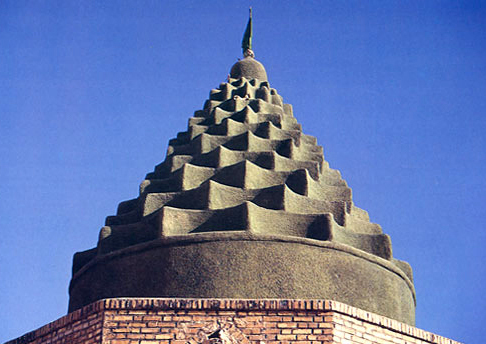|
Tagh E Tavileh
Tagh-e Tavileh is a historic site near Izeh in Iran Iran, officially the Islamic Republic of Iran, and also called Persia, is a country located in Western Asia. It is bordered by Iraq and Turkey to the west, by Azerbaijan and Armenia to the northwest, by the Caspian Sea and Turkm .... According to signage at the sight, Taq-e Tavileh dates to the end of Mohammad Rasool Alla "St." in Izeh and "Lor Atabakan the Greats". The site was discovered during excavations of the hill. It was constructed of stone and plaster with tilework and plasterwork adornment. Clay pipes moved water from Nurabad spring at the foot of Mount Alhak to the building. References {{reflist Historical regions of Iran Khuzestan Province Architecture in Iran ... [...More Info...] [...Related Items...] OR: [Wikipedia] [Google] [Baidu] |
Izeh
Izeh ( fa, ايذه, also Romanized as Īz̄eh; also known as Malāmir, Izaj, and Malemir) is a city and capital of Izeh County, Khuzestan Province, Iran. At the 2006 census, its population was 103,695, in 20,127 families. Izeh also has mines of rocks and minerals. It is famous for its dam and ancient monuments that are located in Kul-e Farah, Eshkaft-e Salman, Khongazhdar, Tagh e Tavileh, Shir-e Sangi (Stone Lion cemetery), Shahsavar relief, Khong e Kamalvand, Khong e Ajdar, Khong e Yaralivand, ghalesard village (Qalesard), and Sheyvand relief. The population of Izeh mainly consists of Bakhtiaris. Climate Izeh has a Hot-summer Mediterranean climate A Mediterranean climate (also called a dry summer temperate climate ''Cs'') is a temperate climate sub-type, generally characterized by warm, dry summers and mild, fairly wet winters; these weather conditions are typically experienced in the ... ( Köppen ''Csa'') with scorching, rainless summers and comfortable, som ... [...More Info...] [...Related Items...] OR: [Wikipedia] [Google] [Baidu] |
Iran
Iran, officially the Islamic Republic of Iran, and also called Persia, is a country located in Western Asia. It is bordered by Iraq and Turkey to the west, by Azerbaijan and Armenia to the northwest, by the Caspian Sea and Turkmenistan to the north, by Afghanistan and Pakistan to the east, and by the Gulf of Oman and the Persian Gulf to the south. It covers an area of , making it the 17th-largest country. Iran has a population of 86 million, making it the 17th-most populous country in the world, and the second-largest in the Middle East. Its largest cities, in descending order, are the capital Tehran, Mashhad, Isfahan, Karaj, Shiraz, and Tabriz. The country is home to one of the world's oldest civilizations, beginning with the formation of the Elamite kingdoms in the fourth millennium BC. It was first unified by the Medes, an ancient Iranian people, in the seventh century BC, and reached its territorial height in the sixth century BC, when Cyrus the Gr ... [...More Info...] [...Related Items...] OR: [Wikipedia] [Google] [Baidu] |
Historical Regions Of Iran
History (derived ) is the systematic study and the documentation of the human activity. The time period of event before the invention of writing systems is considered prehistory. "History" is an umbrella term comprising past events as well as the memory, discovery, collection, organization, presentation, and interpretation of these events. Historians seek knowledge of the past using historical sources such as written documents, oral accounts, art and material artifacts, and ecological markers. History is not complete and still has debatable mysteries. History is also an academic discipline which uses narrative to describe, examine, question, and analyze past events, and investigate their patterns of cause and effect. Historians often debate which narrative best explains an event, as well as the significance of different causes and effects. Historians also debate the nature of history as an end in itself, as well as its usefulness to give perspective on the problems of the p ... [...More Info...] [...Related Items...] OR: [Wikipedia] [Google] [Baidu] |
Khuzestan Province
Khuzestan Province (also spelled Xuzestan; fa, استان خوزستان ''Ostān-e Xūzestān'') is one of the 31 provinces of Iran. It is in the southwest of the country, bordering Iraq and the Persian Gulf. Its capital is Ahvaz and it covers an area of . Since 2014, it has been part of Iran's Region 4. Historically, one of the most important regions of the Ancient Near East, Khuzestan is what historians refer to as ancient Elam, whose capital was in Susa. The Achaemenid Old Persian term for Elam was ''Hujiyā'' when they conquered it from the Elamites, which is present in the modern name. Khuzestan, meaning "the Land of the Khuz", refers to the original inhabitants of this province, the "Susian" people (Old Persian "Huza" or ''Huja'', as in the inscription at the tomb of Darius the Great at Naqsh-e Rostam). They are the Shushan of the Hebrew sources where they are recorded as "Hauja" or "Huja". In Middle Persian, the term evolves into "Khuz" and "Kuzi". The pre-Islamic ... [...More Info...] [...Related Items...] OR: [Wikipedia] [Google] [Baidu] |
.jpg)
